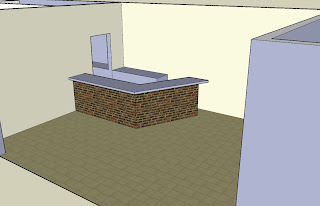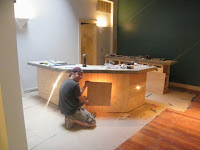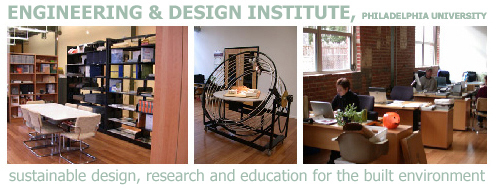This past Saturday was the DVGBC Green Home Tour. Around 30 people were in attendance, most of them being in the DVGBC. We visited, in order,
Bancroft Green,
Montrose Green, and the
Thin Flats.
Here are my thoughts on each:
Bancroft Green:Key features: Geothermal heating and cooling, dual flush toilets, small green roof, rooftop patio, bamboo floors, energy star appliances.
Upon entering the 4 story units (basement included), it had a light and modern feel. Bamboo floors, modern cabinetry, the standard stuff. The landing is elevated from the kitchen, dividing the space, and giving more headroom and sunlight into the basement. The build quality was well done, using insulated concrete panels for the basement, and all of the finishes were very nice.
However, because of the narrow hallways and all of the walls dividing the spaces, the whole property felt a bit crammed. Nothing about the architecture or layout seemed overly innovative, and it had a very
yawn feeling to it. The whole unit lacked defining character, character which we could easily see on the other two homes. It was easy to see that the Bancroft Green builders took a few common green elements, and added them to your 500k townhouse.
Bancroft Green photos: taken from http://picasaweb.google.com/BancroftGreen

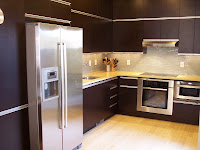

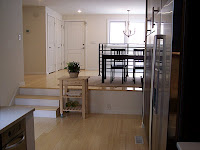
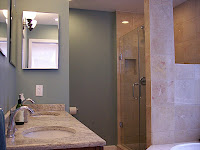
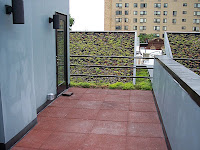
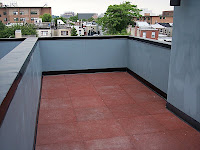

Montrose GreenKey features: FSC Certified Woods & Recycled Metals, Spacious Green Roof with small deck, Rain Water Harvesting system, passive ventilation design, No- and Low-VOC Paints & Stain, Soy Based Spray Foam insulation, energy star appliances, Low Flow Faucets and Fixtures and more...
From the street the unit stand out as the only one with a 3rd story, and it being a silver colored addition makes it stand out even more. Stepping into this updated rowhome, you can feel the richness and character of the old building coming through. The exposed brick, and newly-installed steel handrails and staircase, give the home an industrial, aged look. They went with a deep cherry for the floors, which matches the windows and stairs. You can look up the stairs all the way to the 3rd floor and right out a window with a whole house fan for air ventilation. The second floor has spacious hallways, two large bedrooms, and a beautiful bath with subway tile. The 3rd floor is a master suite with an office and a narrow stairway to the rooftop.
Coming away from this house, you can really feel the hard work that went into everything they've done. The architects are working on site and were easy to talk to. (I met Chris as the Go Green Expo a few months ago)
Photos from Montrose Green:
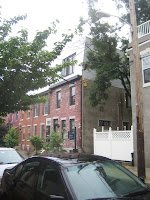

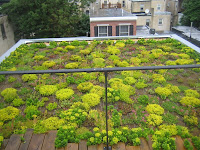
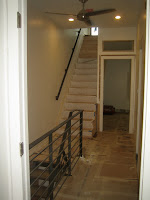


Thin FlatsKey features: LEED Homes Platinum Certification, solar thermal panels, radiant floor heating, green roofs, FSC certified flooring, Low Flow Faucets and Fixtures, Fly Ash Concrete, No- and Low-VOC Paints & Stain, and more...
Approaching the Thin Flats, it screams for attention. Very sharp contrasts with the steel and glass and colorful paint. Located on a narrow street, the Onion Flats team really had to squeeze every inch possible out of the lot. Upon entering, we were greeted by Johnny McDonald. He talked in length about the challenges and benefits of seeking LEED Platinum. The properties are actually divided into 2-unit condo associations, lowering insurance costs and dues.
The most striking architectural element in the Thin Flats is the illuminated bathroom adjacent to the kitchen that they call the "Lantern". Completely surrounded by frosted glass, light flows in during the day, and out during the evening, providing a soft glow for both floors. The main hallway floor on the upper level is made of frosted glass, so light will shine through, opening the space even more. This project is on the cutting edge of sustainable, energy efficient, and smart design.
Photos from the Thin Flats:




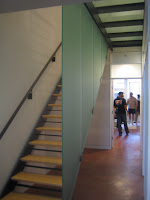
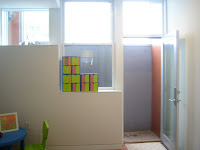

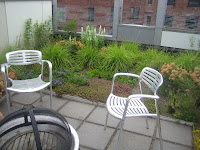

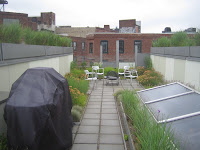

The tour was a lot of fun, it's a shame there weren't more students. Most of the tour-goers were 50+ years of age and were probably established builders or industry professionals. Unfortunately, I didn't take much time to make many contacts like I had hoped. I should have been more outgoing. I'm looking forward to running into these builders and architects in the near future.
 Then I outlined a project proposal for a vacant lot in Renovo, did some quick designs for modest single-bedroom homes, and considered all of the materials and costs to build. The goal was to minimize building costs through simpler methods and efficient materials. After a pricing breakdown, I came to the conclusion that some form of assistance or subsidy is necessary to provide these at the price that they could sell at.
Then I outlined a project proposal for a vacant lot in Renovo, did some quick designs for modest single-bedroom homes, and considered all of the materials and costs to build. The goal was to minimize building costs through simpler methods and efficient materials. After a pricing breakdown, I came to the conclusion that some form of assistance or subsidy is necessary to provide these at the price that they could sell at.